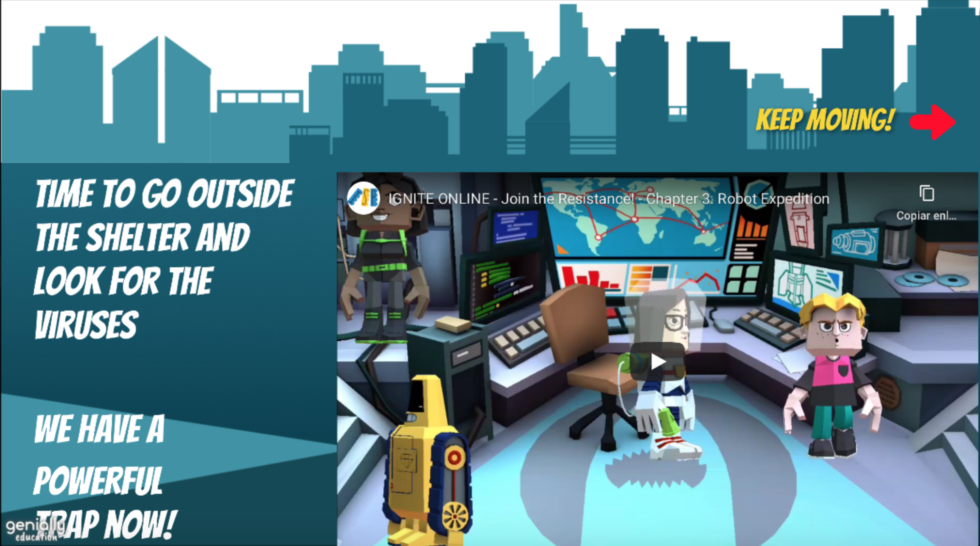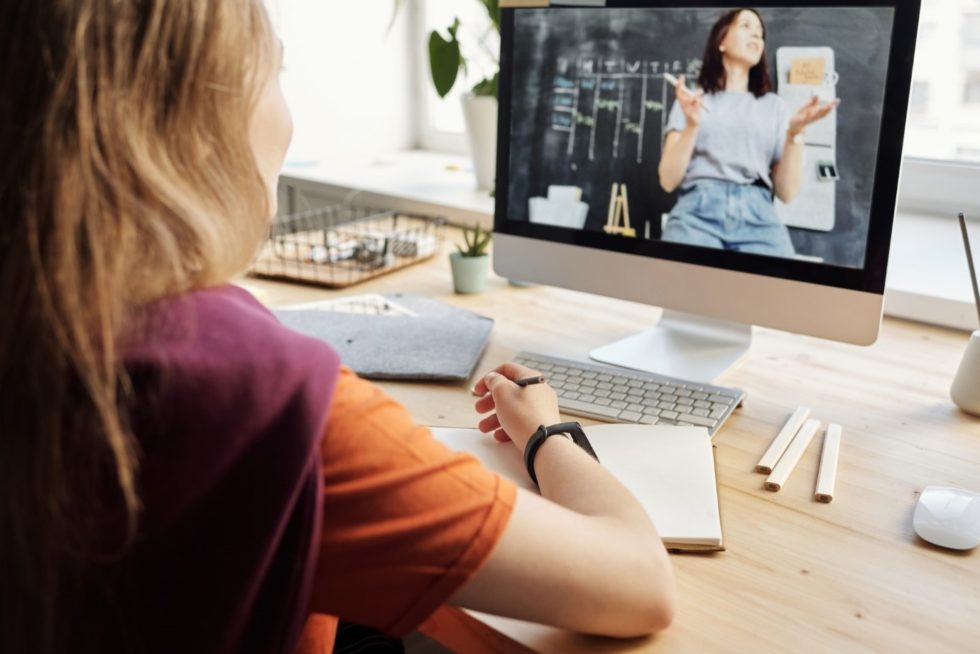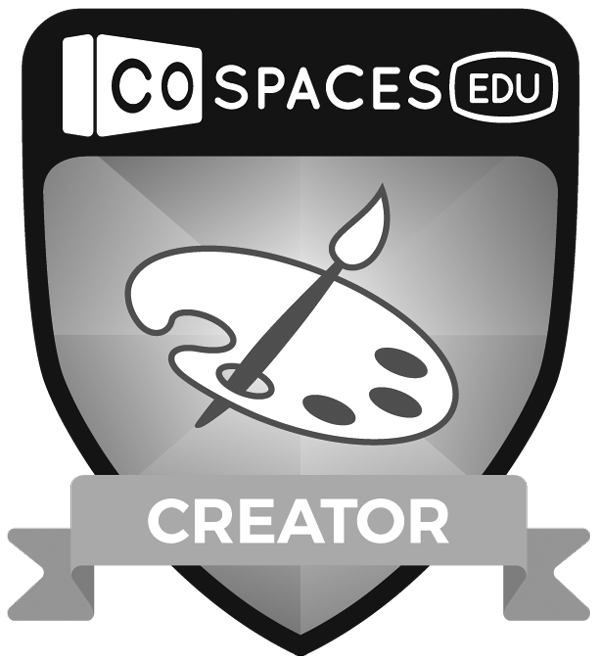We can go back to the Greeks and continue to our current teachers and pedagogues to see that the educational purpose has always been to grow in values for social well-being and transmit a common cultural good. And it is so much so that from one day to the next we confined ourselves and the schools and universities did not stop. The approach was the same for everyone: "we don't know how long," "maybe we don't know how or with what tools but we're going to try." Each center took the lead by deciding: first, what content would be worked on in those first weeks; and, secondly: the means of communication and management of the teaching-learning process. And this is where online training became relevant and the school came to our homes..
La online training It is a successor to distance training which has had various modalities since its inception: by correspondence, by radio, by telephone, by television and by internet (online training). These days we are seeing experiences of each type promoted by different professional and even media and political wills. However:
How do we manage online training from home? We highlight three aspects to take into account:
First: communication with the center. Educational centers have internal communication dynamics for their professionals and another external communication dynamic for families and the educational community. Each center is adapting it to the context of the families in terms of i) closeness they show in their educational relationship, ii) resources offered by the school and iii) those available in homes. Some parents tell us that teachers call them to see how they are and if they have received their homework. We know that others communicate by email, others by educational management platforms such as Clickedu, Alexia, Classlife... (of national origin). For communication to be as sustainable as possible for everyone, it is important to know how the center is communicating with families; What type of content is being reported through these media and how families can communicate with the different professionals at the center.
Second: the identification of learning objectives and the review of learning activities that the center requests or recommends. The teaching staff has been reviewing the competencies, objectives and learning content of the last quarter, now virtual. In this selection they have taken into account the emotional factor of the moment, the availability of resources and following the measures they have been receiving from the institutions. Once again, each center has chosen different methods to communicate this to their students: phone calls, sending assignments by e-mail, use of platforms and webinars. It is in these moments of uncertainty and with the desire to continue moving forward that we move between everyday life and the new.
Digital tools that allow online training
Among the tools that are best known to us from our daily lives and used in schools are those offered by Google with its GSuite version (Google Classroom, Drive, Sites...) and Microsoft Office 365 (Onedrive, Teams...). They also use others that we have participated in family gatherings such as Kahoot or Genially for the possibility of creating games like Trivial.
When talking about platforms for learning processes, we must consider the typology and functionalities of each one. First of all, we must differentiate between: Learning Management Systems (LMS), Content Management Systems (CMS) and tools for creating learning objects.
Some platforms to manage learning processes:
- The LMS They allow us to have our own functionalities for learning, such as: offering content and activities along with a series of tools for monitoring learning and evaluation itself. This is the case of Moodle, one of the best-known free software platforms. This and other tools have tools that allow learning analytics and even create learning itineraries; that is: obtaining content and learning activities according to the evaluation results and interactions that each student makes with the resources, a factor that helps to accompany and personalize the training.
- The CMS They were the predecessors of the LMS because they allow us to offer content in a unidirectional and collaborative way, such as the web pages of each center or the student blogs created with WordPress and Wix. When these are used as a tool to present a learning activity, the privacy and authorship functions must be taken into account; especially, if they are productions by underage students, a situation governed by legal authorizations.
- The learning objects They are those resources that allow us to learn some concept or didactic unit. It is usually a united set of presentations, quizzes and other trending activities such as Scape Rooms. Thanks to the advancement of web 2.0 and its ease of use and interaction, we have thousands of tools. Among them, we highlight Genially, a tool always updated with the latest visual styles and active methodologies such as gamification. An example is the one offered by IGNITE ONLINE in its Maker and Coding classes with its interactive and gamified narratives.
Tools that help in online training.
We invite you to see chapter 3 of JOIN THE RESISTANCE! (ISP, 2020) prepared with this tool where we intersperse other resources such as Quizizz.

Learn playing
Another interesting point about these resources is that individual and group activities are created to play, learning at the same time (in synchrony) and allowing each person's time rhythm (asynchrony) and even with a scheduled time. Additionally, many of these tools can be integrated into Moodle, Google Classroom, and Edmodo virtual classrooms., among other. This allows the monitoring of students in each group-class in an easier way for teachers and students.
Between the everyday and the new we have also named the webinars. How many times have we heard that our children and young people are being trained in image culture but that they have so rarely been part of group webinars!
Even our teachers, largely trained for in-person classes, are learning through practice to energize virtual classes (online training), with new tools and types of activities. Many are discovering and developing skills with integrated questionnaires, sharing presentations and screens, creating virtual rooms for small work groups,… Something that is still maintained thanks to platforms such as Blackboard Collaborate, Adobe Connect or Zoom is asking to speak by raising your hand! hand!
You also learn in a group
Third: help and collaboration to complete and improve achievements. You learn by playing and doing. And, also, we learn with others: interacting, asking, listening and reading what our classmates and teachers say; There are several studies and theories that support it. In days of confinement, we need even more the help of others, their contributions and their “being online”.
The resolution of doubts can be a first approach “to the other” and the excuse to put the first foot in what learning communities are. If we have the opportunity to have group spaces to share with our colleagues, we feel part of something more, with a common learning objective. In IGNITE ONLINE the identity of Makers and Coders is also enhanced with the shared space in Circuit. This is a space where they not only share with their classmates but with those from other centers, even from other places in the world!
In these spaces, not only the students but also the teachers themselves enjoy seeing how they commit and grow with their STEAM creations.
These three elements are the main ones so that families know what is key to take into account to follow the online learning processes. If we talk about online training, schools must include many other aspects. One of them is the legal terms of privacy and authorship of the resources created by the students; also the privacy of the image and audio of the students; and, of course: keep the authorizations for the use of these tools up to date. All of this is for another separate post (!)
Methodologies and pedagogical foundation also in IGNITE Online online training
At IGNITE ONLINE we like our Makers and Coders to learn by doing, playing and creating, as our motto says: LET’S PLAY, LET’S CREATE, LET’S IGNITE! We always offer our small entrepreneurs learning methodologies trending from the pedagogical foundation and created with our team of professionals and collaborators.
Our star methodologies that we recommend to take online training to another level in days of confinement are the Gamification and challenge-based learning. Although we have always used them in face-to-face classes, we now take advantage of online resources to continue with them.
Another methodology that has been heard in the last five years is Flipped Learning, those who know it well know that it focuses on an autonomous part to work on the content and in person to work in a group. Thanks to the multiple tools today we have converted it to virtuality with good planning of webinars (with different objectives), platforms and types of activities.
Again at IGNITE Online, our Makers have activities so they can understand and advance on their own, webinars to share doubts and webinars and online space to apply learning with group activities (always much better!)
Let's continue educating with online training
Let us return to the fact that educational purposes have historically been marked by personal and social development and by the casuistries of the times. These days the most important thing is to keep in mind what our priorities are, to handle the situation calmly and calmly. We must also handle the situation calmly and calmly and, above all, know that with everyone's collaboration and commitment it is possible to continue learning for the present and future world.
We will continue to give them tools that reflect their Maker spirit and that promote their creative, leadership and collaborative skills. In this way we will make confinement and online training a context in which we continue learning, training and advancing with criteria and expectations for the future. Because, as the well-known Jean Piaget (1896 – 1980) told us:
The main goal of education is to create men who are capable of doing new things, not simply repeating what other generations have done; men who are creative, inventors and discoverers. The second goal of education is to form minds that are critical, that can verify and not accept everything that is offered to them.







